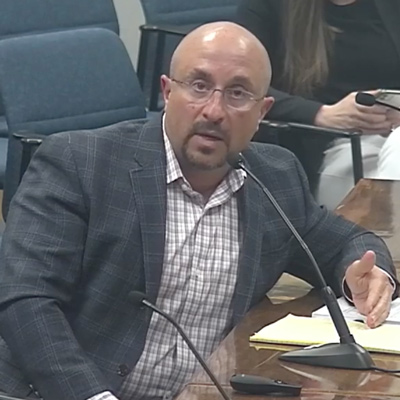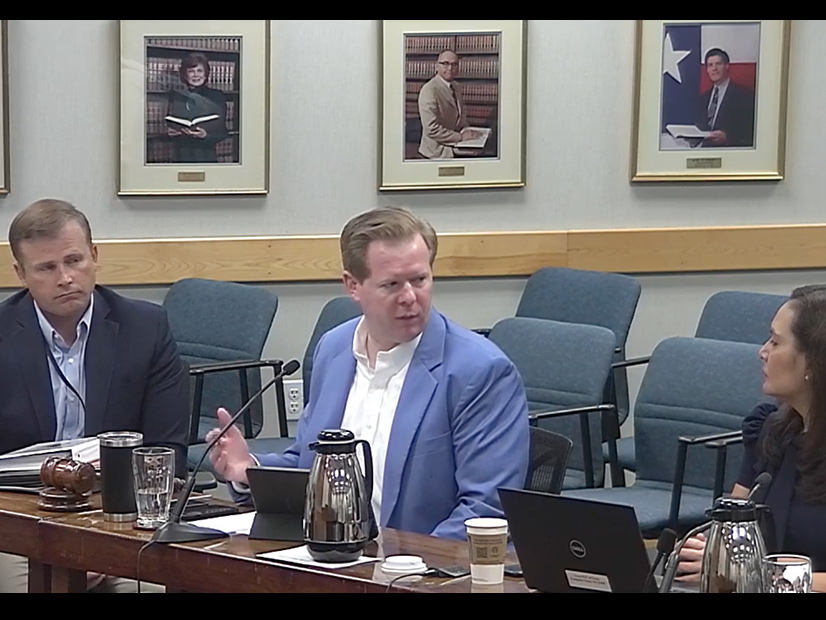Continue reading "PUC Debates Answers to ERCOT’s Reliability Issues"
The Texas Public Utility Commission’s rookie electric utility regulators last week stood in front of the proverbial fire hose, wielded by ERCOT staff, market participants and the grid’s Independent Market Monitor, as they try to get a grip on how best to respond to February’s disastrous winter storm.
In what the PUC billed as the first of many general information work sessions “directly oriented” around Texas’ recent legislative session, the commissioners heard from the market’s stakeholders as they explored ERCOT’s current ancillary services design and scarcity pricing mechanism, forward prices and their effect on investment decisions, and future technologies.
“This is a forum for a discussion of what’s working, what’s not working and how do we make it better,” Chairman Peter Lake said in opening the conversation during the July 1 meeting. “No one should take anything said up here as being written in stone or some grand intention of future action.”
But on Tuesday, Texas Gov. Greg Abbott gave the PUC marching orders when he directed it to “immediately” take action to increase generation capacity and ensure the grid’s reliability.
Saying the PUC has the ability to “redesign segments of the market,” he urged streamlining incentives to develop and maintain “adequate and reliable” sources of power. He suggested natural gas, coal and nuclear power, all of which were offline during the storm and contributed to ERCOT’s inability to meet record demand.
At the same time, Abbott ordered the market to allocate reliability costs to generation resources that can’t guarantee availability, a jab at wind and solar power. Similar language was struck from legislation that Texas lawmakers passed during their recent session.
Abbott also told the PUC to order ERCOT to establish a maintenance schedule for non-renewable generators and to accelerate development of transmission projects that increase connectivity between dispatchable generation plants and “areas of need.”
The PUC has been completely revamped since the storm’s freezing temperatures almost collapsed the grid. The commissioners at the time have all been replaced by industry outsiders Lake and Will McAdams. Lori Cobos, the newest commissioner, comes from the Office of Public Utility Counsel and sat on ERCOT’s Board of Directors.
The commission will expand to five regulators before September, the result of one of the numerous bills recently passed by the Texas Legislature, which adjourned May 31. The centerpiece was Senate Bill 3, an omnibus bill that focused on weatherizing facilities and increasing administrative and civil penalties. (See Texas Legislators Finish Work on Electricity Market — for Now.)

Former PUC and FERC Chair Pat Wood pointed to SB3’s Section 18 as the legislation’s key language, calling it “the gem of Senate Bill 3.” The section focuses on ERCOT’s reliability responsibilities and directs the grid operator to determine and procure the ancillary or reliability services necessary during extreme weather conditions and during non-dispatchable power production.
The bill’s language defines non-dispatchable generation as any generation facility whose output “is controlled primarily by forces outside of human control” — in other words, renewable resources.
“Section 18 is the forward lane to how we make sure we fix the things that happened in February,” Wood said. “But more importantly, this grid is shifting faster than any grid in the world. We have these resources shining and blowing on us. There’s not a state like this. We’ve got to get this right.”
Wood said that in the future, nuclear, wind and solar energy will be setting prices. “That other 20% is going to be really spiky and really pricey,” he said, depending on how the grid’s intermittent resources respond.

NRG Energy’s Bill Barnes told the commissioners that competitive power markets have long struggled with addressing the “inherent conflict” between reliability and markets. Allowing the market to work “means you have to take risks,” he said, none more so than relying on the energy-only market’s high scarcity prices that drive investment cycles.
“One of the disadvantages is involuntary firm load shed may occur more often than found acceptable. The requirement of a workable energy-only market is customers, regulators and policymakers must be willing to tolerate price spikes and firm load shed,” Barnes said, quoting a 2012 Brattle Group study on ERCOT investment incentives and resource adequacy.
“February told us we don’t,” he said.
Barnes, NRG’s chief Texas lobbyist, called for improving financial incentives for reliability and resource adequacy, “specifically, financial incentives for dispatchable resources.”
He noted that ERCOT’s most recent capacity, demand and reserves report indicates the grid operator has 65 GW of thermal capacity at its disposal. That means renewables are needed to meet demand when it exceeds 65 GW. That makes the management of variable resources’ reliability key to resolving ERCOT’s “root problem,” Barnes said. “Products that help procure additional ancillary services when you have low wind and low solar … are really what we think we need to supplement the existing market design.”
Barnes also called for additional changes to the market’s operating reserve demand curve (ORDC), which he called the No. 1 tool for maintaining ERCOT’s core market structure.
The ORDC was added to the market in 2014 following a report filed with the PUC by William Hogan, research director of Harvard University’s electricity policy group. It creates a real-time price adder to reflect the value of available reserves. It has been tweaked in recent years as coal-fired generation was retired, shrinking ERCOT’s reserve margin. (See Texas PUC Responds to Shrinking Reserve Margin.)
“We believe ORDC reform is so important,” Barnes said. “What drives investment? The forward [price] curve. What sets the forward curve? Prices. What sets the prices? The ORDC.”
IMM Director Carrie Bivens delivered a 101 presentation on ERCOT prices, beginning with the baseline energy price set by the marginal generating unit’s marginal cost, usually set by a gas-fired resource. The ORDC and reliability deployment price adder are then added on, yielding the total system price.
“So, the feature of the market design is no one wants to offer more than the marginal price,” Lake said.
“If you’re never in scarcity, then you don’t need more generation. If you’re in long-term scarcity conditions, that’s a signal we need more generation,” Bivens responded.
She explained that ERCOT’s real-time prices are incenting fast-responding resources, such as gas turbines and energy storage. With the grid’s current 15.7% reserve margin, the market is saying combined cycle units are not needed, Bivens said.
“The market is incenting investment,” said Katie Coleman, who represents Texas Industrial Energy Consumers, referring to the mountain of wind and solar resources in ERCOT’s interconnection queue. “It’s not the type of investment you want, because we can’t always rely on it.”
Cobos noted that the PUC has only “certain knobs we can turn” to drive scarcity prices, a reference to the ORDC, price adders and the ancillary services market. “We’ll have to work with what we have now.”
“SB3 has some pretty big knobs in it,” Lake said.




